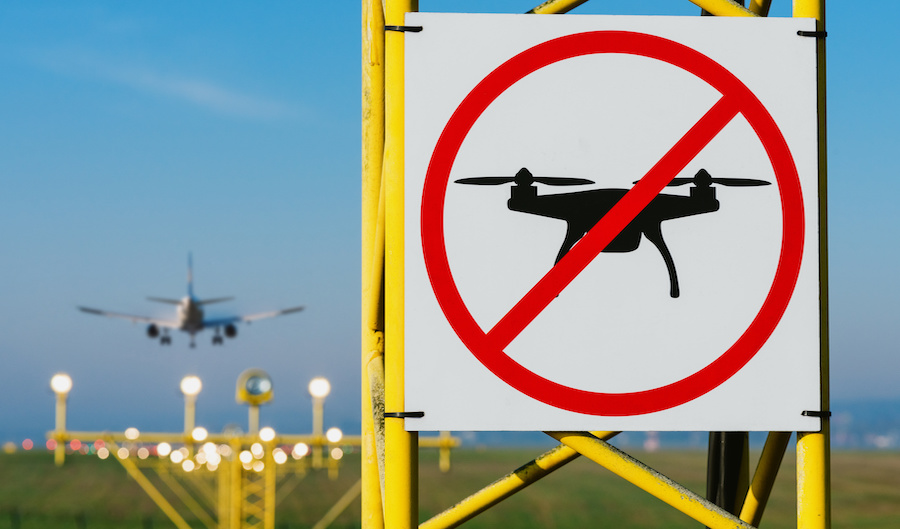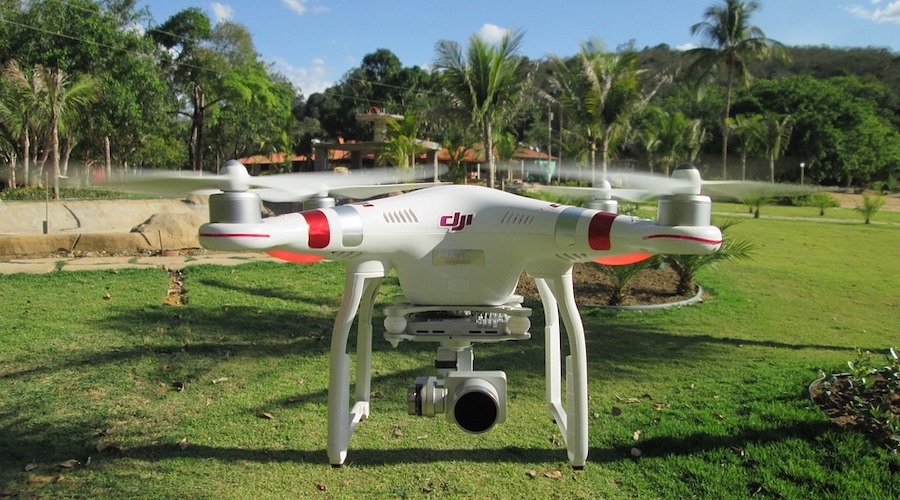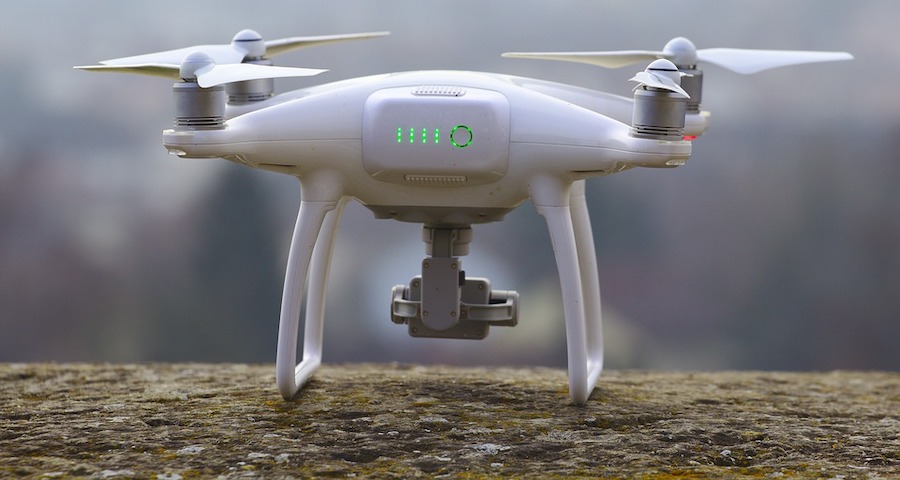-
Public Parks vs. National Parks
-
Drone Laws in National Parks vs. Public Parks
- Drone Law Wiki
-
How will I know if I can fly my drone in a nearby public park?
-
Safety tips when flying in public parks
- 1. Check the airspace classification
- 2. Ask for permission before taking photos
- 3. Make the people around you feel comfortable
- 4. Do not fly directly over other people
- 5. Make sure to have a Part 107 license if you’re flying commercially
-
Final thoughts
By default, drone flight is allowed in local public parks and state parks. However, local ordinances may have already been put in place to restrict or control drone flight. Just to be sure, it’s best to check for drone-related rules in the public park that you intend to visit via the website, phone call, or a personal conversation with park staff.
The current public perception of drones calls drone pilots to become a little more discerning on when and where they decide to fly. Amidst all the issues on privacy and drone-related security incidents that seem to happen almost daily, exercising a bit of restraint and making sure that we comply with all relevant laws seems to be best for the whole drone community.
In this article, we tackle the issues related to flying drones in public parks. Who has jurisdiction over public parks, and what rules in place are relevant to drone laws? Which document should you check or who should you contact if you want to fly your drone in a public park?
Public Parks vs. National Parks
Before we start the discussion on public parks, we must first define their distinction from National Parks. A public park is a common space maintained and funded by the local government. They can vary in size according to the size of the surrounding neighborhoods but are typically smaller than national parks. Public parks are open for all and serve as a space for recreation. You’ll usually find features such as a children’s playground, paved walkways, ponds, and other sports amenities in public parks.
National Parks, on the other hand, are managed by the US National Park Service (NPS). They are often built around significant geological formations or monuments that have cultural significance. National Parks are designed to showcase these highlights in a manner that keeps them preserved and maintained. National Parks can be huge enough to serve as a sanctuary for wildlife, and public access to some areas in a national park can be controlled or highly regulated.

Drone Laws in National Parks vs. Public Parks
It is much easier to define the rules on drone flight in National Parks and Wilderness Areas because the NPS has absolute authority over them. Under 36 CFR 1.5, the flight of any unmanned aircraft (including drones and model airplanes) is prohibited in all national parks. According to the NPS, unmanned aircraft pose a security threat to park visitors and staff. The noise that drones makes can also disturb the serenity of the wildlife that have made a habitat in these National Parks.
Violators of this rule may face up to six months of jail time and up to $5000 in penalties. While it’s possible to be given an exception to the rule, the NP only grants it for drone flight for purpose of scientific studies or research.
What’s the rule on drone flight in public parks? Well, there isn’t a single rule, per se. What complicates this matter is the fact that public parks are under the jurisdiction of the local government. The level of government that controls these public parks can also vary – there are parks maintained at the state level (known as state parks), while smaller ones can be under the mandate of the city or municipality.
By default, drone flight is allowed in public parks and state parks. However, each park district has the authority to create orders that prohibit or regulate drone flight in their respective parks. This can take the form of absolute restriction, designated hours for drone flight, or a requirement for drone pilots to secure a permit prior to flying their drones.
Even in the absence of a published order, park staff have the authority to approach a drone operator and ask them to cease drone flight if they believe that they are posing threats to the safety and privacy or park visitors, staff, property, or wildlife.
How will I know if I can fly my drone in a nearby public park?
If there’s a public park that you want to visit and fly a drone in, the easiest thing to do would be to check if the park district or administration has a website and look for any drone-relevant rules. Larger parks are usually very clear about this matter. For instance, the rules of the Del Valle Regional Park in Livermore, California state that drone flight is absolutely prohibited in park premises. On the other hand, drone pilots have been able to fly with no issues in the Salt Point Park in Sonoma County, despite the absence of any hard and fast rule on drone flight.
In the absence of any rules posted online, your next best option would be to give them a call and ask them about it or simply go to the park and look for posted rules. You may also ask the park staff or head straight over to the park administration office.
In any case, the last thing you want to do is to fly only by FAA rules. The FAA rules on drone flight don’t take into account any potential issues on privacy and noise pollution, but local laws may already be in place to address these matters. Pitting FAA regulations against city ordinances has gone the way of drone pilots in the past, but such a conflict doesn’t help the drone community. If you want to avoid getting in legal hot water, we still recommend complying with both the FAA rules and local laws.
Safety tips when flying in public parks
Should you manage to find a public park where you can fly your drone with no hitch or receive authorization to fly your drone in a public park, then good for you. Kudos for taking care of things the legal way.
However, keep in mind that you’ll be flying your drone in what is most likely a densely populated location. Moreover, many public parks are meant to be enjoyed by kids and adults who simply want to relax or play sports. As a drone pilot, it is your responsibility to not make these people feel that you are intruding in their activities or are posing any safety threat.
To make sure that your drone flight operations don’t ruin the fun of the other people in the park, here are a few tips:
1. Check the airspace classification
You may not find any rules in a public park that prohibits drone flight, but there are public parks that fall within controlled airspace. A quick check in a mobile app like B4UFLY can let you know if you need to file a LAANC authorization request before you can fly your drones.
2. Ask for permission before taking photos
Although there’s no law prohibiting make from taking photos of people in public places, it is merely courtesy to ask for their permission anyway – especially if you’re around kids. This is a good gesture even if you’re not actually taking photos of the people around you. They don’t know exactly where your camera is pointed at, and people are naturally suspicious of a stranger holding a camera, especially one that can fly around.
3. Make the people around you feel comfortable
To many people, drones are still this alien technology that they don’t understand, and that’s where the fear comes from. When you fly a drone in a public place, you will undoubtedly have people looking your way and getting curious about what you’re doing. Strike a conversation with them and show them the photos that you’ve taken. This way, you can make them see that you’re not doing anything malicious or illegal. Who knows? You might even convince a few people to buy their first drones.
4. Do not fly directly over other people
Both recreational and commercial drone flight rules prohibit the flight of a drone directly over people who are not directly participating in the operations. Doing so poses a huge safety threat to the people should your drone crash. In the same vein, it’s best to keep a healthy distance away from people since a drone will crash along a trajectory, which is hard to predict. We also recommend keeping away from walking paths, playgrounds, or any area where dogs are allowed to move around without a leash.
5. Make sure to have a Part 107 license if you’re flying commercially
If you’re planning to do any commercial drone photography in a public park, make sure that you have earned your Part 107 license and that you have the license on hand. Park staff have the authority to ask you to present your drone license or to cease your operations if they feel that you are endangering other people.
Final thoughts
Determining whether you can fly a drone in a public park can be quite tricky, but it’s nothing that a good amount of research and diplomacy can’t handle. Just make sure to get in touch with the proper authorities, fly according to their rules, and don’t endanger the people around you or give them cause for concern.


